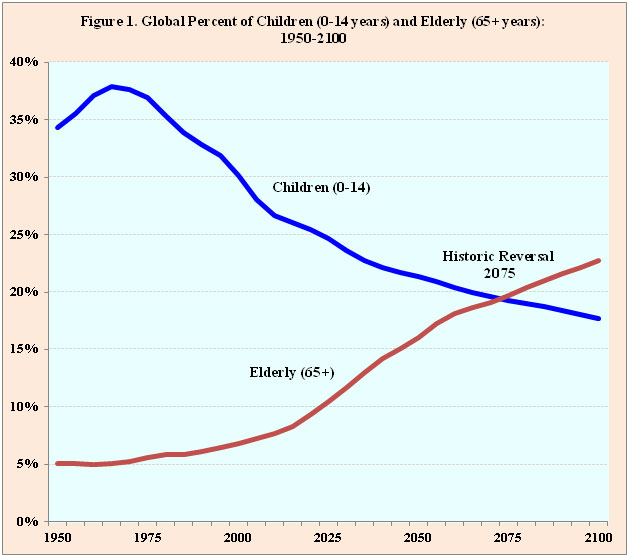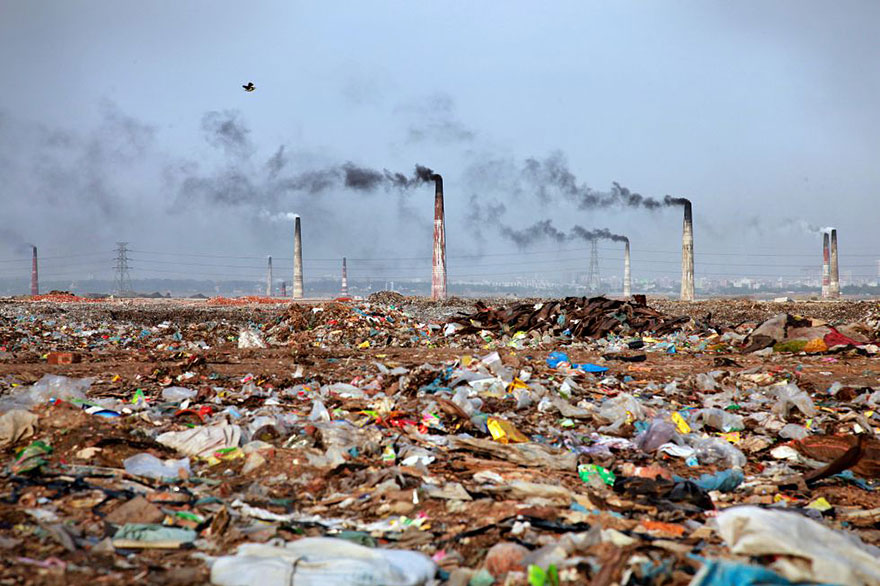Global Freak-Out on Inevitable Population Aging
Published on August 31st, 2016
Heads exploded around the world recently.
 What caused this sudden spate of multiple mass splatter incidents? Could it have been that President Obama suddenly had a change of heart and announced that henceforth “undocumented migrants” are to be called illegal aliens (what they actually are) and deported forthwith?
What caused this sudden spate of multiple mass splatter incidents? Could it have been that President Obama suddenly had a change of heart and announced that henceforth “undocumented migrants” are to be called illegal aliens (what they actually are) and deported forthwith?
That leading Republicans suddenly had a change of heart and announced that they now accept the scientific consensus on climate change and the urgent need to reduce our carbon emissions?
Not a chance. If either of these announcements had actually occurred, my head would have exploded with an ecstasy overload. Unfortunately, either one is about as likely as Hollywood producers announcing that from now on they will forswear sex, swearing and violence, and use only ordinary people instead of pretty people as actors in films.
 |
| Demographer Joseph Chamie, former director of the United Nations Population Division. |
What actually caused the furor is that respected demographer Joseph Chamie, former director of the U.N. Population Division, merely pointed out the obvious and the inevitable: that as a result of the decades-long, positive global trends toward lower birth rates and longer lifespans, populations worldwide are aging.
That’s it. How underwhelming! After the historically unprecedented global population boom of the 20th century, unless populations were going to continue growing exponentially until they exhausted key resources and collapsed under their own weight, this process of aging is as inevitable and unavoidable as the sun setting if it rises.
In a post entitled “The Historic Reversal of Populations” at the Inter Press Service News Agency, Chamie detailed the following:
-
“Throughout human history children were substantially more numerous than the elderly. Even a half century ago, the world’s population of 3.3 billion had on average more than seven children under 15 years of age for each elderly person aged 65 and over.”
-
Now, however, in what Chamie calls a “historic reversal,” many countries have reached or are approaching a “demographic turning point” where the number of children is less than the number of elderly.
-
At present, in 30 countries around the world, the number of elderly (those above 65 years of age) exceeds the number of children (those under 15 years old).
-
By 2075, in the world as a whole, there will be more people over 65 than there are under 15 (see graph).
 |
| Source: U.N. Population Division and Joseph Chamie. |
Chamie himself, in the same article, calls this “Historic Reversal” a “noteworthy demographic achievement,” that is, an accomplishment to be lauded and adapted to more than feared and avoided. And this is because it represents a desirable state of affairs in which birth rates and death rates are low and affluence and human wellbeing are high, instead of one in which birth rates and death rates are high and affluence and human wellbeing are low.
To put it mildly, Chamie’s opinion that this “reversal” is an achievement was not a reaction universally shared around the world. Instead, as Joe Bish of the Population Media Center observed: “pro-growth pundits [used] the article to fan the flames of population aging fears.”
“…the article has spread like wild-fire across the planet, having been reprinted, alluded to, and otherwise parroted in many major media outlets, religious websites, and who knows how many blogs. For a few examples see: Bloomberg (More Old Than Young: A Demographic Shock Sweeps the Globe), New American (Population Expert Predicts World’s Elderly Will Soon Outnumber Children), and Yahoo Finance (More Old Than Young: A Population Plague Spreads Around the Globe).”
While Chamie regards this demographic turning point as an achievement, he is correct to acknowledge that it does entail a host of considerable implications and challenges. Among the issues population aging affects are retirement age, Social Security (and old-age pension systems generally), taxation, immigration, foreign policy, defense and government spending.
Chamie reviews the various options for addressing what many regard as the most pressing issue of all: how to continue funding old-age pension systems “with more elderly beneficiaries and relatively fewer workers contributing to support them.” He writes:
 |
| The hysterical reaction of many in the press to demographer Joseph Chamie’s “historic reversal” article on “The Historic Reversal of Populations.” |
“Governments may choose to increase taxes, redirect government revenue, reduce benefits or privatize old age pension schemes. Understandably, those options are not met with enthusiasm by the general public, especially the elderly.
“Other options include raising below replacement fertility levels and increasing the immigration of workers. However, even if fertility rates were to rise, which seem unlikely in the near term, it would take a couple of decades before the additional children could join the work force.
“Adding immigrant workers, in contrast, would immediately expand the labor force. But eventually those workers also age, join the elderly population and rely on government pension programs. Over time this would in turn require even more immigrant workers to support the growing numbers of elderly persons.”
Admitting ever more immigrant workers to fund Social Security or other old-age pension plans amounts to little more than a Ponzi scheme that would result in an ever larger population for any given country. Yet this is what many short-sighted fools propose for the United States.
As Chamie correctly observes, perhaps the least problematic option for funding pension programs is to simply raise the official retirement age (as has been happening), but he is also correct to note that even this is typically met with scorn and protest. Yet because average life expectancy has increased dramatically since Social Security was implemented, and therefore the average number of years in retirement as well, it is only logical and fair that workers should work and contribute to the retirement system for longer.
My only objection to Chamie’s article is that it does not emphasize enough – or at all – that human overpopulation is an overarching issue and that the world is already in population overshoot. If anything, humanity needs to reduce population numbers, gradually and humanely over many years, if we are to have any hope of averting environmental and climate calamity and pursuing an authentically sustainable and durable future.
 |
|
The ravages of overpopulation and overconsumption will destroy our life-giving planet.
In contrast, dealing with population aging is eminently doable, even if it involves
some tough choices for societies. But those tough choices are unavoidable.
|
If he had done this, Chamie would have cautioned that raising fertility rates is not an ecologically acceptable or sustainable option, except perhaps in those countries where the Total Fertility Rate (TFR) is suicidally low, say, approaching one-half of replacement level TFR of 2.1. The United States is decidedly not one of those countries, and our TFR has hovered close to 2.1, sometimes slightly above, sometimes slightly below, for more than four decades already.
The angst over the alleged “birth dearth” and population aging is nothing new. The U.N. Population Division and other scholars and demographers have been researching and writing about this for decades. Nor is new the worrying about how to fund pension schemes with an increasing ratio of elderly retirees in the population. The Center for Immigration Studies has issued a number of reports critical of relying upon continuing mass immigration to prop up Social Security, for example, here.
Thus, the global freak-out over Joseph Chamie’s post reflects an unnecessary but widespread anxiety among many in the public about the inevitable demographic future that awaits us if we maintain course.
What people should be far more worried about are the disasters and problems that will engulf humanity and the biosphere – that are already engulfing Earth even now – if we don’t face up to overpopulation.
The adaptions needed to address the challenges posed by aging populations are nothing compared to the horrors that overpopulation will unleash if left unaddressed.




